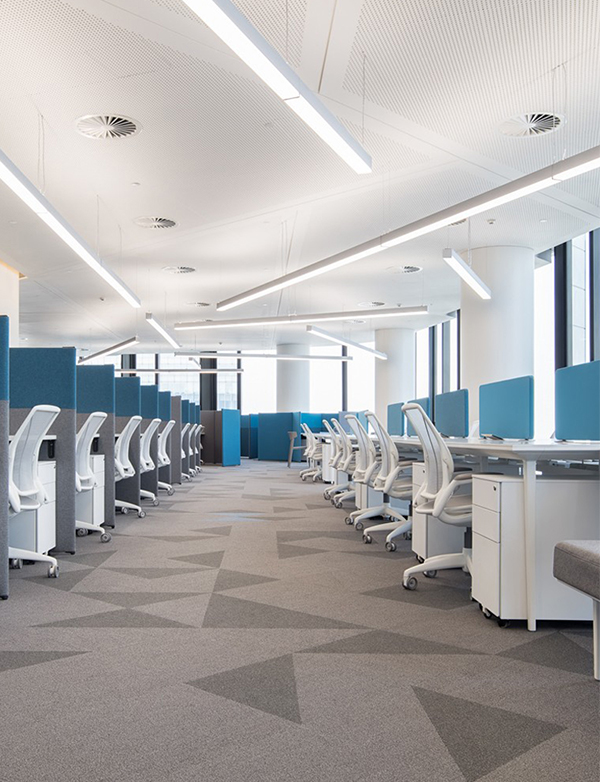Source: PengKe Lighting
Time: 2019-11-27
The office is a place where the staff is engaged in close vision work for a long time, and the eyes are used for a long time. The company needs to provide a bright lighting environment for the workers. Therefore, the office decoration environment should have higher illumination requirements. Higher brightness can bring people an open and pleasant feeling, which will help people improve their work efficiency and create more benefits for the enterprise. Pengke Lighting talks about four design principles for office lighting design:

Design Principles 1. Reasonable use of natural light. The introduction of natural light has a direct relationship with the opening of the windows in the office. The difference in the size and method of the amount of windows and light incident will have a great impact on the psychological and visual aspects of the room. Generally speaking, the larger the opening of the window, the greater the diffusion of natural light. However, the strong light of natural light can sometimes irritate the office, which is not conducive to the mood of the office. Type windows, as far as possible to meet people's psychological needs for natural light, but also pay attention to the decoration design of soft light curtains, so that the light energy after secondary treatment into a comfortable light source.
Design Principle 2. There is a certain requirement for the uniformity of the office lighting, but it is not as uniform as possible. Proper illumination changes can ease the atmosphere of the entire office decoration design. For general lighting, the ratio of the minimum illuminance to the average illuminance should not be less than 0.7 and the ratio of the illuminance to the immediate surroundings of the work surface should not be less than 0.5. For both general lighting and local lighting, the average illuminance in the non-working area should not be less than half of the working area and not less than 200 lux. For two adjacent areas, the average illuminance ratio between the office and the aisle next to it cannot exceed 5: 1, and the illuminance in the lower area is at least 150 lux. Otherwise, it will easily produce strong contrast changes in the office. , Which causes visual fatigue in the work of the human eye in the lighting environment.
Design Principle 3. When designing the office decoration, fully consider the wall color, material and space orientation of the office space to determine the illumination and light color of the lighting. The design of light is closely related to the decoration of the three major interior interfaces. If the decorative materials of the wall and the ceiling are light-absorbing materials, the light illumination design should be appropriately adjusted and improved. If the interior interface is decorated with reflective materials, It should be properly adjusted to reduce the light level, so as to design a comfortable light environment.
Design Principle 4. The decorative lighting of the office space is set up to activate the atmosphere of the space, but its role must always be matched with the overall lighting and obey the functional and economic requirements of the office decoration space.